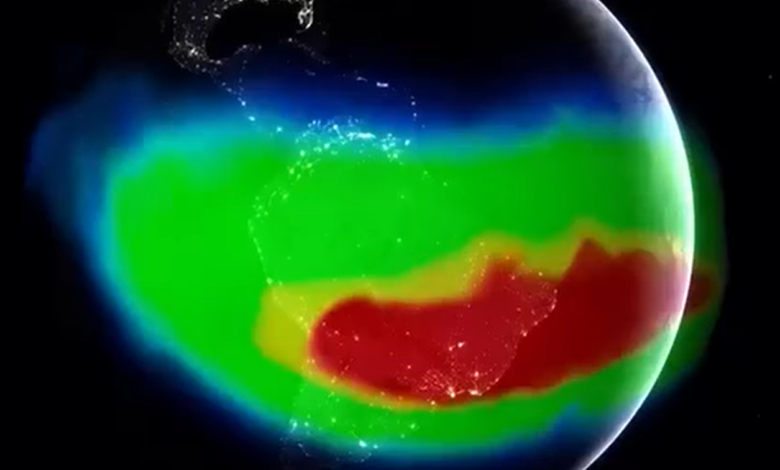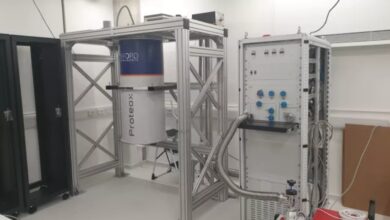NASA Watches Over Expanding Anomaly in Earth’s Magnetic Field
Fascinating development within the realm of geophysics, NASA has been closely monitoring a peculiar and growing anomaly in Earth's magnetic field, known as the South Atlantic Anomaly (SAA).

Fascinating development within the realm of geophysics, NASA has been closely monitoring a peculiar and growing anomaly in Earth’s magnetic field, known as the South Atlantic Anomaly (SAA). This anomaly, likened to a ‘dent’ or ‘pothole in space,’ has been capturing the attention of scientists for years due to its potential implications for both space technology and our understanding of Earth’s internal dynamics.
What is the South Atlantic Anomaly?
The SAA is an area where Earth’s magnetic field is unusually weak, stretching over South America and into the southwestern Atlantic Ocean. This anomaly allows high-energy particles from the Sun to penetrate closer to Earth’s surface than anywhere else on the planet, posing risks to satellites, the International Space Station (ISS), and other spacecraft that pass through it.
Current Observations and Changes
Recent studies and satellite data suggest that the SAA is not only growing but also changing in shape. NASA’s observations indicate that the anomaly is expanding westward and has started to split into two distinct cells, each representing a center of minimum magnetic intensity. This phenomenon was first noted in 2016 by NASA heliophysicist Ashley Greeley, with further confirmation coming from various satellite missions, including CubeSats, which have tracked the anomaly’s movement and evolution.
According to NASA’s geomagnetic experts, this split could have significant implications for how we manage spacecraft in orbit, as the anomaly affects the functionality of electronic systems. The ISS, for instance, must take precautionary measures when passing through this region to shield its equipment and crew from the increased radiation.
Causes and Geological Significance
The primary source of Earth’s magnetic field is believed to be the swirling molten iron within the planet’s outer core, thousands of kilometers below the surface. However, the anomaly is thought to be influenced by a large reservoir of dense rock known as the African Large Low Shear Velocity Province, located deep beneath Africa, which disrupts the uniform generation of the magnetic field. The tilt of Earth’s magnetic axis also plays a role in this weakening effect.
Long-term Effects and Research
While the SAA doesn’t directly impact life on Earth, its study provides valuable insights into the planet’s magnetic dynamics. There’s historical evidence suggesting that such anomalies are not new, with some research indicating that similar events have occurred millions of years ago, hinting at a cyclical nature rather than an immediate precursor to a magnetic field reversal.
NASA’s commitment to monitoring the SAA is twofold: to protect space assets and to deepen our understanding of Earth’s geophysical processes. The space agency employs a variety of satellites and ground-based instruments to gather data, ensuring that any changes in the anomaly can be tracked and analyzed. This research not only aids in satellite design and operation but also in predicting future changes in Earth’s magnetic environment.
Community and Scientific Interest
Posts on X have been abuzz with discussions on this topic, reflecting a blend of curiosity and concern among the public about what this means for future space exploration and our planet’s magnetic health. NASA’s ongoing efforts are well-noted by both the scientific community and laypersons interested in the marvels and mysteries of our planet’s protective magnetic shield.
As we continue to watch this anomaly evolve, NASA’s vigilance ensures that both our technological endeavors in space and our fundamental understanding of Earth’s geophysics will be safeguarded and advanced. The story of the South Atlantic Anomaly is a testament to the ever-changing nature of our planet, reminding us of the complexities that lie beneath our feet and above our heads.




